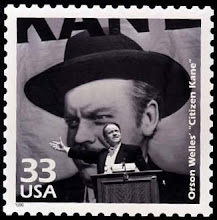It’s been a tough summer for cinematic San Francisco. Last month, the post-apocalyptic wasteland of
SF served as a battleground for Man vs. Monkey in Dawn of the Planet of the
Apes. Before that, a trio of horrific
monsters laid waste to my City by the Bay in the recent reboot of
Godzilla. Not since Jeanette McDonald
warbled her way through the devastation of the 1906 earthquake has the city
taken such a pummeling on celluloid in one year.
I’ll admit I had fun in both films—neither was superb
but the production values were high, the casts were game, and the silliness
was within acceptable limits for these genre tentpole endeavors. But between both, there was only one moment
that really struck me as arresting and even, perhaps, magical.
To provide a little context: I am not an adrenaline
junkie. I don’t really participate in
extreme sports, ride wild rollercoasters, or do high-octane adventure
travels. I love taking my time, enjoying
the scenery. I’m a walker, not a runner. Heck, I don’t even know how to ride a bike. But one thing I have done is
jumped out of a plane.
It was my bachelor party, 15 years ago. Instead of the typical bar crawl/strip joint
routine, I wanted to go skydiving. Not a
tandem jump. Not a static line. A full free fall, where I pull the chute
myself, land myself. So that’s what we
did. We had to train for hours on what
were essentially three procedures: (1) Jumping, (2) Pulling the chute, (3)
Pulling the emergency chute if #2 didn’t go so well. In fact, by the time our training was done,
the winds were too high and we (the two groomsmen and myself) had to come back
the next morning to jump.
And that’s what we did.
We each went one at a time, so the other two could be waiting on the
ground when one landed. I jumped
first. The hours of learning the same
routine over and over was smart, because by the time you were standing at the
plane's doorway, you were thinking about the steps you had to do and not about being thousands of feet
above the ground. The rule was that you
jumped with two experienced skydivers, so while you weren’t attached in any
way, they could keep an eye on you in your descent.
Similarly, there was a routine as you were falling to earth:
Check your altimeter (to track your fall), check the horizon (for orientation),
check in with each of your spotters (thumbs up sign). Rinse, repeat. Over and over. The thing you discover very quickly is that
it is very, very windy and very loud from the wind as you fall.
And the Earth is so far removed so far below, it almost seems
abstract. It’s unreal. So while you’re conscious that it’s gradually
getting closer, it doesn’t really feel like you’re falling. You feel suspended in a way. But you have your routine (rinse, repeat) so
you don’t have much time to wrap your head around the unnatural particulars of your situation. You just have one job: Land.
And then, at the right altitude, you pull the chute and you
get this massive jerk and then you’re not suspended anymore, but you are
floating. You feel gravity more because
of the harness you’re in, and you start adjusting to the handles that control
your directions. Your spotters kept
falling so you are by yourself in the sky.
That’s when you can start enjoying the view and getting your bearings. Those first moments are the most tranquil and beautiful.
Eventually, the spotter (who has now landed) checks in with
you on the one-way radio in your helmet to start spotting you again, giving suggestions so you can
best hit the landing zone. Each descent is
different, but mine consisted of a large circle that spiraled into tighter and
tighter rotations until I was heading straight for the target. Then, right before you touchdown, you pull
the handles down hard, giving you one final gentle little air bubble in the chute, so
you don’t land quite so hard. Then, when
you’re on the ground, you run to gather your chute so the wind doesn’t blow it
(and you) farther afield.
It was awesome. Not
just the sensation of it, but knowing that I did it all myself. I've focused on the mechanics of the jump because the truly amazing aspects really are impossible for me to describe. I’ve never experienced anything like it, and
though I haven’t done it again since (mostly because of cost), I would again
in a heartbeat.
So there’s this scene towards the end of Godzilla where a
dozen paratroopers (each holding a red smoke flare) jump over San Francisco,
enshrouded with fog and smoke from the monster battle below. And the camera follows Aaron Taylor-Johnson’s
descent, with the only sound his breathing and the only music Ligeti’s haunting
Requiem (made famous by Kubrick’s 2001).
In a movie full of noise and bombast, it’s a moment that borders on the
spiritual as these falling angels dive straight into hell. Remarkable.
Raymond Burr was featured in the US release of the original
Godzilla (1956, Honda/Morse). Perry
Mason premiered a year later. The USPS Scott
# for the stamp of that TV show is 4414n.
The Iron Man stamp is Scott #4159h












